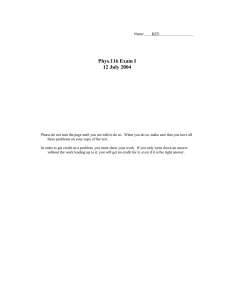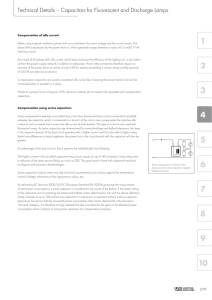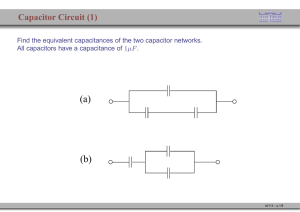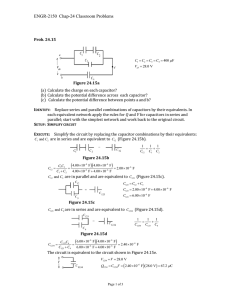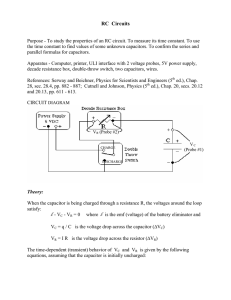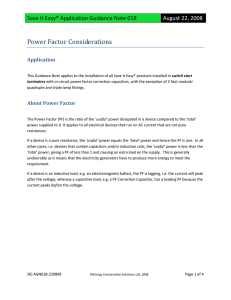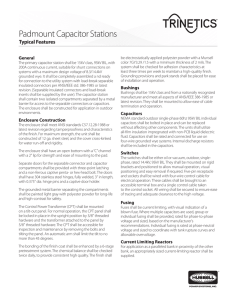Physics 2B: Capacitor & Network Formula Sheet
advertisement
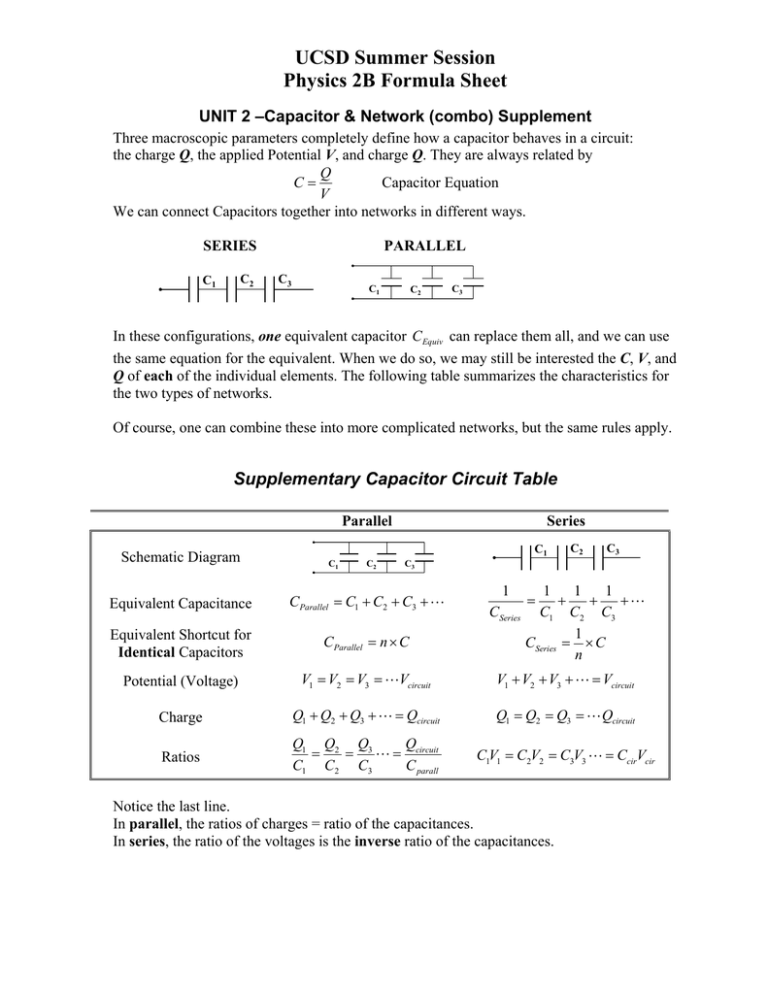
UCSD Summer Session Physics 2B Formula Sheet UNIT 2 –Capacitor & Network (combo) Supplement Three macroscopic parameters completely define how a capacitor behaves in a circuit: the charge Q, the applied Potential V, and charge Q. They are always related by Q Capacitor Equation C= V We can connect Capacitors together into networks in different ways. SERIES C2 C1 PARALLEL C3 C1 C2 C3 In these configurations, one equivalent capacitor CEquiv can replace them all, and we can use the same equation for the equivalent. When we do so, we may still be interested the C, V, and Q of each of the individual elements. The following table summarizes the characteristics for the two types of networks. Of course, one can combine these into more complicated networks, but the same rules apply. Supplementary Capacitor Circuit Table Parallel Schematic Diagram Series C1 C1 C2 C2 C3 C3 1 1 1 1 + + +" CSeries C1 C2 C3 1 CSeries = × C n = Equivalent Capacitance CParallel = C1 + C2 + C3 +" Equivalent Shortcut for Identical Capacitors CParallel = n × C Potential (Voltage) V1 = V2 = V3 = "Vcircuit V1 + V2 + V3 + " = Vcircuit Charge Q1 + Q2 + Q3 + " = Qcircuit Q1 = Q2 = Q3 = " Qcircuit Ratios Q Q1 Q2 Q3 = = " = circuit C1 C2 C3 C parall C1V1 = C2V2 = C3V3 " = CcirVcir Notice the last line. In parallel, the ratios of charges = ratio of the capacitances. In series, the ratio of the voltages is the inverse ratio of the capacitances.
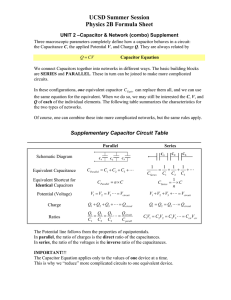



![Sample_hold[1]](http://s2.studylib.net/store/data/005360237_1-66a09447be9ffd6ace4f3f67c2fef5c7-300x300.png)
